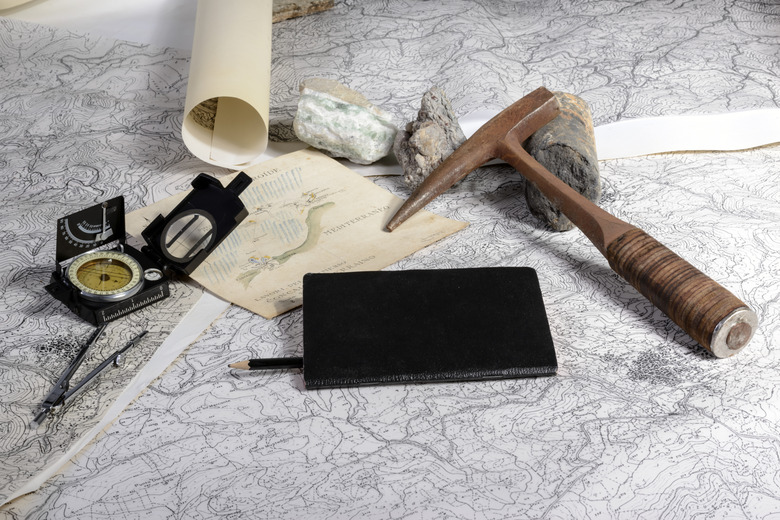Topography Types
Topography refers to the shape, relief, contours, roughness and other dimensions of the Earth's surface. This can include both natural geological features and man-made structures. Surveys are conducted to study, measure and map topographical features to give a detailed visualization of an area. Topography is important for travel, transportation, flight paths, engineering, architecture, geology, forestry and farming. It also has a significant impact on how cities are designed and laid out.
Karst Topography
Karst Topography
Karst topography describes the distinct landscape that is made when underlying rocks dissolve or change shape. This forms caves, fissures, underground wells, jagged hills, cliffs, river beds and other types of terrain. This type of topography indicates that water is close to soluble bedrock such as limestone, dolomite, gypsum and rock salt. Karst topography is found throughout the world; in the U.S. it is particularly important for mapping large cave formations such as Mammoth Cave and the Fisher Ridge Cave System in Kentucky, Jewel Cave and Wind Cave in South Dakota, and the Friars Hole System in West Virginia.
Mountain Topography
Mountain Topography
Topographical maps show landforms such as hills and mountains. Contour lines mark where mountains and hills are located and represent their features. These include their height, slope steepness, slope configuration and slope position. On a topographic map, mountains are typically marked from the ridge top to the valley bottom, with lighter colors for higher altitudes and numbers that show height in relation to sea level. Mountains differ from hills because they show greater height and area.
Vegetation, Elevation and Glaciers
Vegetation, Elevation and Glaciers
The reliefs or contours of a region are often shown as brown lines that connect points of equal elevation on a map. These make it possible to measure and show mountain heights, steep slopes and ocean depths on a flat map. Topographic studies and mapping may also include vegetation such as forests at each level of a mountain. Large, dense forests are represented by darker shades of green on a map, while sparser vegetation in fields and plains is depicted in lighter green. Similarly, larger and deeper bodies of water are colored or outlined in darker shades of blue than smaller lakes and ponds. White areas and contour lines show glaciers and snowfields, which are snow-covered all year round.
References
- USGS Geology in the Parks: Karst Topography – Teacher's Guide and Paper Model
- United States Search and Rescue Task Force: Topographical Map Basics
- Natural Resources Canada: Topo Maps: Frequently Asked Questions
- Plant Ecology: The Relationships Between Vegetation Type and Topography in Lassen Volcanic National Park
- JustTrails: Reading Topographic Maps – Contour Lines and Relief
Cite This Article
MLA
, June Kane. "Topography Types" sciencing.com, https://www.sciencing.com/topography-types-5935444/. 24 April 2017.
APA
, June Kane. (2017, April 24). Topography Types. sciencing.com. Retrieved from https://www.sciencing.com/topography-types-5935444/
Chicago
, June Kane. Topography Types last modified August 30, 2022. https://www.sciencing.com/topography-types-5935444/
